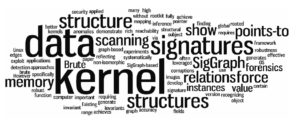- (5.0 Star)
Software Developers
Certification Training
We provide Online Instructor And Classroom Instructor led Live virtual classroom by certified trainers/ industry professionals
- Get Up to 35% discount
About Course
Software developers (or computer programmers) are the brains behind the design, installation, testing and maintenance of software systems.Much more than just playing around with codes, if you work with software you’ll play an important part in making a business more efficient and helping to provide a better IT service.
Computer programmers write the step-by-step instructions that direct computers to process information in a series of logical steps. This involves establishing a detailed specification and clarifying exactly what the programme needs to do, then breaking the specification down to its simplest elements and translating this into an appropriate programming language. Different tasks require different programming languages, but those most in demand are: C++, Visual Basic (.Net), and Java (J2EE).
Key Features
You will get 100% job Assurance and life time e-placement support
classed taken by globally certified trainers
You will get 3 year Dedicated placement support
Courses are globally recognized & accredited

Course Type:
Certification Training
Live virtual classroom:
11,999/-
14,999 /-
Regular classroom:
11,999/-
14,999 /-
- Duration:
6 Months
- Enrolled:
124 Learners
- Eligibility:
BCA/BSc IT/BE/B-Tech 10 / 10+2 / Graduate
- 5 Star:
15 Reviews
SEMESTER- I
Duration : 20 Hrs. Eligibility : Fresher 10th/10+2/Graduate
OVERVIEW OF PHP
- Introduction to Programming Concepts
- Declarative Computation Model
- Declarative Programming Techniques
- Declarative Concurrency
- Message-Passing Concurrency
- Explicit State
- Object-Oriented Programming
- Shared-State Concurrency
- Relational Programming
- Graphical User Interface Programming
- Distributed Programming
- Constraint Programming
C is a high-level and general purpose programming language that is ideal for developing firmware or portable applications. Originally intended for writing system software, C was developed at Bell Labs by Dennis Ritchie for the Unix Operating System (OS) in the early 1970s. C is a structured, procedural programming language that has been widely used both for operating systems and applications and that has had a wide following in the academic community. Many versions of UNIX-based operating systems are written in C. C has been standardized as part of the Portable Operating System Interface (POSIX). C Program Components
Duration : 20 Hrs. Eligibility : Fresher 10th/10+2/Graduate
- Functions
- Statements
- File inclusion
- Input and Output
- Keywords
- Variables
- Operators
DATA AND OPERATORS
- Identifiers
- Fundamental data types and their operators
- Constants
- Operator precedence
- Conversions
- Casting
- Scope
CONTROL FLOW
- Boolean operators
- Conditional selection
- Iteration
FUNCTIONS
- Functional modularity
- Passing data in and out of functions
- Pass by value and reference
- Member functions
ARRAYS
- Defining arrays and access through subscripting
- Passing arrays to functions
- Strings in C
STRUCTURES AND UNION
- Data structures
- Aggregation
- Enumerations
THE PREPROCESSOR
- Using the preprocessor to create symbolic constants and macros
- Using conditional compilation techniques
POINTERS
- Concept of indirection
- Null pointers
- Using pointers with functions and arrays
- Pointer arithmetic
POINTERS AND ARRAYS
- The relationship between pointers and arrays
- Using pointer arithmetic to index arrays
POINTERS AND STRUCTURES
- Using pointers with structures and introducing the structure pointer
- operator
- Passing structures to functions
DYNAMIC MEMORY
- Accessing the heap or freestore with malloc and free
- Creating dynamic arrays
FILE I/O
- Working with the standard library file input and output routines
THE STANDARD LIBRARY
- Introducing other features of the standard library
- Sorting and searching
- Printing and scanning strings
- Time and data handling
- International code
LARGER PROGRAMS
- How to construct larger programs and handle the coupling between
- modules
ADVANCED FEATURES
- Overview of some advanced features
- Bit manipulation
- Unions & Enum
C++ is an object oriented programming (OOP) language, developed by Bjarne Stroustrup, and is an extension of C language. It is therefore possible to code C++ in a “C style” or “object-oriented style.” In certain scenarios, it can be coded in either way and is thus an effective example of a hybrid language. C++ is a general purpose object oriented programming language. It is considered to be an intermediate level language, as it encapsulates both high and low level language features. Initially, the language was called ‘C with classes’ as it had all properties of C language with an additional concept of ‘classes’. However, it was renamed to C++ in 1983.
Duration : 20 Hrs. Eligibility : Fresher 10th/10+2/Graduate
C++ PROGRAM COMPONENTS
- Basic program components
- Functions
- Statements
- File inclusion
Input and output - Keywords
- Variables
- Operators
DATA AND OPERATORS
- Identifiers
- Fundamental data types and their operators
- Constants
- Operator precedence
- Conversions
- Casting
- Scope
STRUCTURED DATA TYPES
- Enumerations
- Data structures
- Aggregation
- Standard Library string class
CONTROL FLOW
- Boolean operators
- Conditional selection
- Iteration
FUNCTIONS
- Functional modularity
- Passing data in and out of functions
- Pass by value and reference
- Member functions
- Optimization with inline
ARRAYS AND VECTORS
- Basic containers
- Arrays and the standard template library vector class
- Access through subscripting and member functions
- C type strings
CLASSES
- Object-orientation and classes
- Encapsulation
- Automatic construction
- Copying and conversions
POINTERS
- Concept of indirection
- Null pointers
- Using pointers with functions and arrays
- Pointer arithmetic
DYNAMIC MEMORY
- Accessing the heap or freestore with new and delete
- Dynamic arrays
- Automatic destruction
OBJECT RELATIONSHIPS
- Aggregation and association
- Delegation
- Managing custody of dynamic memory
- Copying custodial objects
OPERATOR OVERLOADING
- Class operators
- Overloading with globals or members,
- Lvalue operators
- Copy assignment
- C++
- STREAMS
- Working with the Standard Streams
- File streams
- Manipulators
- String streams
STL CONTAINERS
- Introducing templates and the main Standard Template Library container classes
- Vector
- Deque
- List, set and map
- Guidelines on choosing the right container for the job
ITERATORS
- Using Iterators to access the elements of Standard Template Library
- containers
- Introducing the standard algorithms
INHERITANCE
- Object-orientation and inheritance
- Creating and using derived classes
- Vertical delegation
- Standard conversions
POLYMORPHISM
- Declaring and using virtual functions and the need for virtual destructors
- Pure virtual functions and abstract classes
ADVANCED FEATURES
- Overview of some advanced features
- Exception handling
- Namespaces
- Multiple inheritance
- Smart pointers
- Template functions
- Extending the STL
A data structure is a specialized format for organizing and storing data. General data structure types include the array, the file, the record, the table, the tree, and so on. Any data structure is designed to organize data to suit a specific purpose so that it can be accessed and worked with in appropriate ways. In computer programming, a data structure may be selected or designed to store data for the purpose of working on it with various algorithms.C++ Program Components
Duration : 30 Hrs. Eligibility : Fresher 10th/10+2 /Graduate with C programming skill
INTRODUCTION TO DATA STRUCTURES:
- Definition, Classification of data structures : primitive and non primitive. Operations on data structures. Dynamic memory allocation and pointers: Definition Accessing the address of a variable, Declaring and initializing pointers. Accessing a variable through its pointer. Meaning of static and dynamic memory allocation. Memory allocation functions : malloc, calloc, free and realloc.
RECURSION
- Definition, Recursion in C, Writing Recursive programs Binomial coefficient, Fibonacci, GCD. Searching and Sorting Search: Basic Search Techniques : Search algorithm searching techniques : sequential search, Binary search – Iterative and Recursive methods. Comparison between sequential and binary search.
SORT
- General Background: Definition, different types: Bubble sort, Selection sort, Merge sort, Insertion sort, Quick sort .
STACK
- Definition, Array representation of stack, Operations on stack: Infix, prefix and postfix notations Conversion of an arithmetic expression from Infix to postfix. Applications of staks.
QUEUE
- Definition, Array representation of queue, Types of queue: Simple queue, circular queue, double ended queue (deque) priority queue, operations on all types of Queues.
LINKED LIST
- Definition, Components of linked list, Representation of linked list, Advantages and Disadvantages of linked list. Types of linked list : Singly linked list, Doubly linked list, Circular linked list and circular doubly linked list. Operations on singly linked list : creation, insertion, deletion, search and display.

Sent Us a Message

